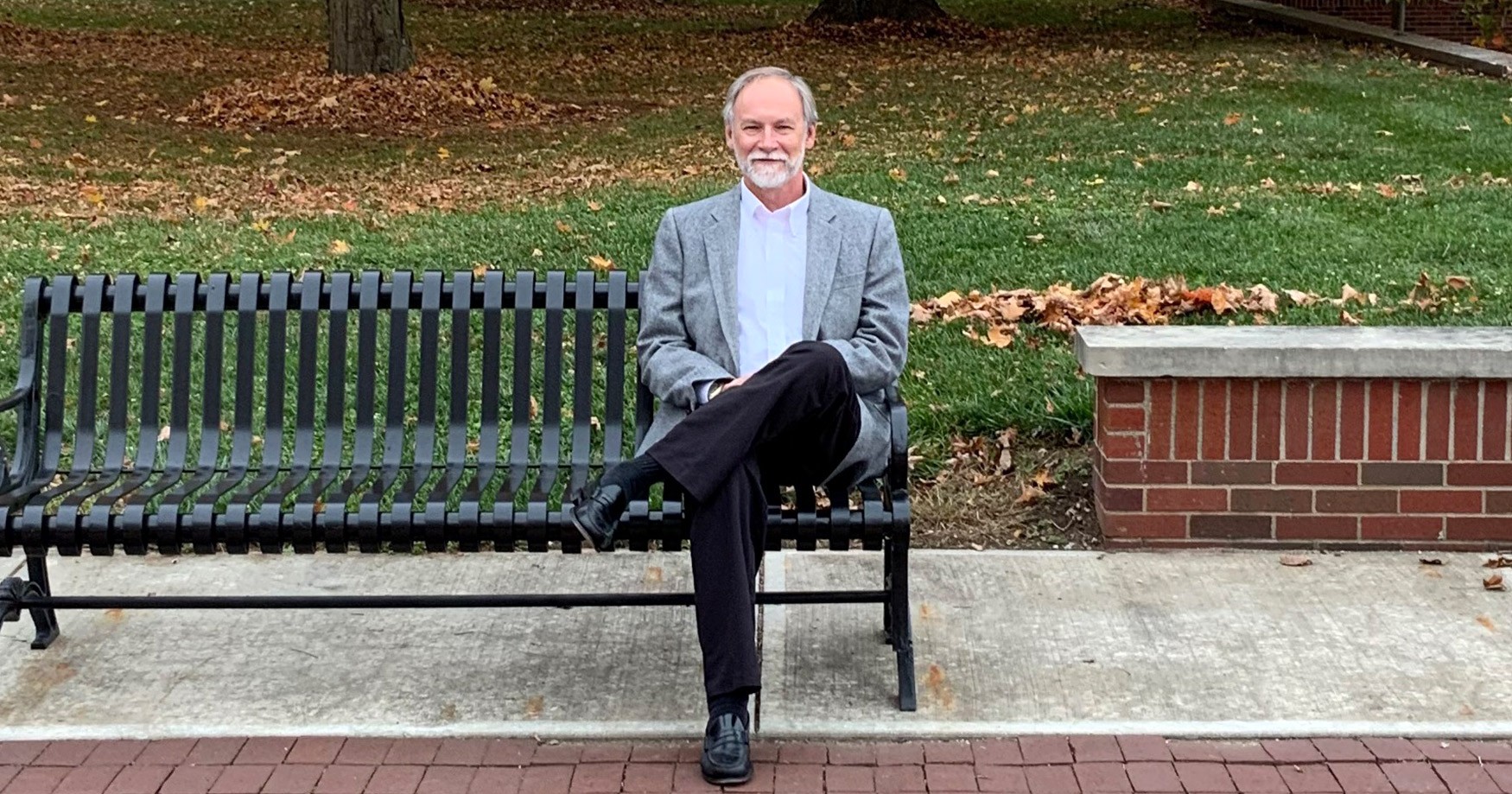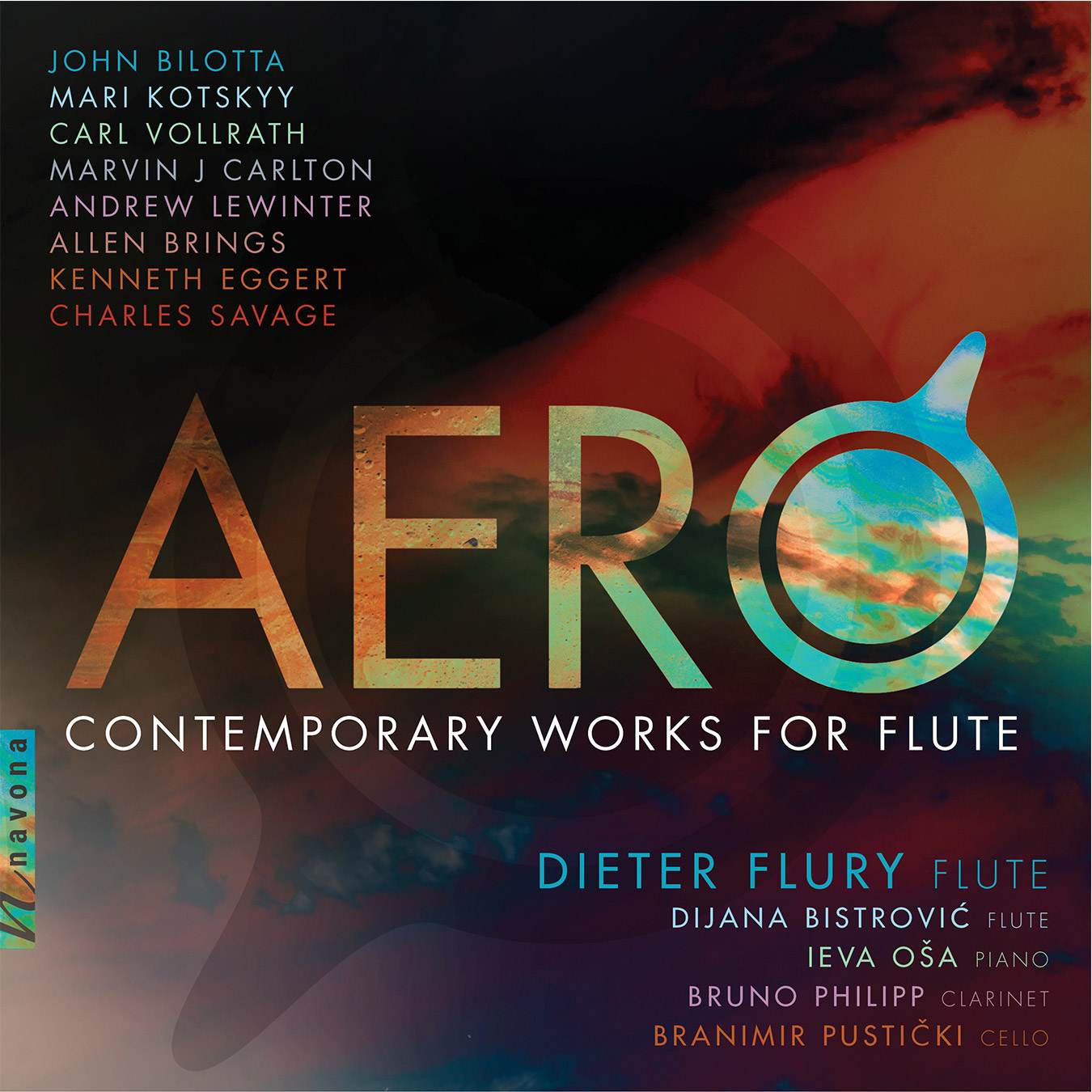From Mozart’s concertos to Jethro Tull’s “Aqualung,” the flute has served as a versatile tool for conveying the spectrum of human emotion. On AERO, flutist Dieter Flury puts decades of study and a handmade golden flute by Yamaha to work to breathe life into works by contemporary composers like Charles Savage and spark the imaginations of listeners. Savage’s Mad Rush to the End shows off the power of two flutes with a drive that creates a unified “super-flute.”
Today, Charles is our featured artist in “The Inside Story,” a blog series exploring the inner workings and personalities of our composers and performers. Read on to discover why the very first note means so much to him…
Who was your first favorite artist(s) growing up?
During my childhood, access to recording was limited to what I was able to check out from the local library branch. The first “classical” recording I remember was Rossini’s William Tell Overture, being played on a 78 rpm that my mother owned, on a small portable record player with a steel needle. I believe it was Toscanini conducting the NBC Orchestra. That was about eight or nine years of age. I also listened to various popular artists of the time, such as Herb Alpert, Al Hirt, The Beatles, Beach Boys, Floyd Cramer, and the Kingston Trio albums. So much of the time, the same recordings received multiple hearings. Many recordings were popular albums of the 1960s and very early 70s. There were snippets of classical music being provided by Saturday morning cartoons that left a certain curiosity. Until college, there was not much opportunity for a variety of live performances or varied recordings.
When did you realize that you wanted to be an artist?
When I was in Junior High School. I had a wonderful choir director, who discovered that I had a talent for singing, and allowed me to sing a solo and to conduct (a bit). Also, I was doing a bit of singing/song-leading at the church I was attending. I felt the urge to compose my own music after listening to Charles Ives’ Unanswered Question, Stravinsky’s Rite of Spring, and Copland’s Fanfare for the Common Man, during a college freshman music appreciation class. Many years later, I still am fascinated by these works, and introduce them to young musicians whenever possible. With the use of YouTube, it makes it easier to introduce the works that I found fascinating. Now we can see the works being performed by the famous conductors and orchestras that helped make them possible.
If you could instantly have expertise performing one instrument, what instrument would that be?
The piano, without a doubt. Due to economic reasons, I started very late in “attempting” to learn it. The most readily available instrument was my voice. But I also picked up the trumpet (a bit in elementary school). I spent a great deal of time singing in four-part harmony old church hymns and Bach Chorales (from the Mainous/Ottman book).
What was your favorite musical moment on the album?
The very first note being played on the recording. Once it begins, then it very rapidly moves forward. Knowing the personal history that this composition has had, travelling from South Zanesville, Ohio to Arkansas, to Belgium and Croatia has been amazing for me. Also, the “Skyping” with the recording engineers and artists was a “first time” event for me. When Dieter Flury and Dijana Bistrovic took their first breath to perform/record Mad Rush, it took me back to its original performance with clarinetist Cynthia Krenzel and tenor saxophonist Thomas Doggett. The anticipation of this performance was very exciting, and very powerful.
What does this album mean to you personally?
I have been looking forward to this moment for almost 40 years. This is my first professional recording. Also, that I have been included on this album with such a wonderful group of distinguished composers. Mad Rush to the End, first performed in 2002, has travelled a bit, and now it is professionally recorded. It is wonderful.
Is there a specific feeling that you would like communicated to audiences in this work?
I want listeners to hear the conflicts and resolutions between two equal musical instruments. Not everything is in constant harmony. Though the dissonances may not be extreme, they exist, as in real-life. Both instruments are strong in performance and in personality. And yet, they cooperate as one entity. I also wasn’t listeners to enjoy Mad Rush as fascinating and fun, and a brief ride on a roller coaster, or any enjoyable moment in our lives, that did not last quite long enough, and want to again. Sometimes the smallest of compositions can be a powerful and meaningful statement.
Explore Charles’ Latest Release
AERO
From Mozart’s concertos to Jethro Tull’s “Aqualung,” the flute has served as a versatile tool for conveying the spectrum of human emotion. On AERO, flutist Dieter Flury puts decades of study and a handmade golden flute by Yamaha to work to breathe life into works by contemporary composers and spark the imaginations of listeners.




